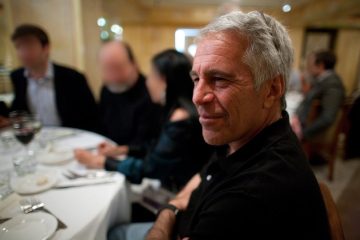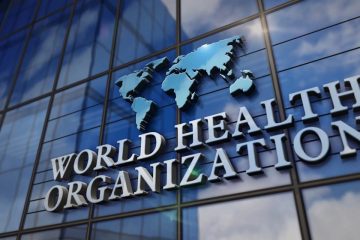China’s Ascent: Dominating the Future of EVs, Green Energy, and Biotech

The global race for technological supremacy has long focused on Silicon Valley and Europe’s innovation hubs.” China is not merely catching up; it is rapidly emerging as a global leader. The significant advancements and unprecedented growth of electric vehicles (EVs), renewable energy (RE), and biotech in China are reshaping the global technology landscape, driven by the country’s ambitious state strategy, lightning-fast innovation, and industrial supremacy.
China currently dominates the world’s largest EV market, with annual sales exceeding 11 million units and representing over 50 percent of global EV sales. Companies such as BYD, NIO, XPeng, and Li Auto have rapidly expanded beyond China, with BYD surpassing Tesla in total global EV sales in 2025. China’s dominance in EV exports stands out significantly. In 2024, it shipped out 1.2 million EVs—surpassing Japan to become the world’s top automobile exporter. Once derided for low-cost imitations, Chinese EVs now rival both in price and cutting-edge technology across Europe, Southeast Asia, and North America. China’s EV sales hit 11 million units in 2024, commanding nearly two-thirds of the global market, while Europe accounts for 17 percent and the US only 7 percent. In Q1 2025, Chinese EV sales surged by 55 per cent to 1.64 million units, surpassing Europe’s 28 per cent (574,000) and the US’ 18 per cent (301,000).
Control over battery technology is at the core of China’s EV power. China dominates global EV production, accounting for 70 per cent, while domestic leaders CATL and BYD provide 55 per cent of the world’s batteries, resulting in unparalleled battery pricing and efficiency. Intense local competition has spurred significant innovations, reducing battery costs to below $100/kWh for lithium iron phosphate (LFP) batteries, achieving price parity with combustion engines—a milestone that remains elusive in the West. China’s vertically integrated supply chain constitutes 75 per cent of lithium-ion battery production, dominating cobalt/lithium refining and cathode/anode materials. In contrast, European and US supply chains are fragmented and encounter production costs that are 20 percent higher.
Battery-swap stations and vehicle-to-grid (V2G) integration are providing Chinese EVs with a technological and cost advantage. China has established a robust EV ecosystem under the “Made in China 2025” plan, leveraging substantial subsidies, ongoing infrastructure investment, and strategic supply chain planning. It already has 20 times more public EV chargers than the US and four times as many as Europe.
In the renewables sector, China’s dominance is more pronounced and slated to become even more stronger with the country investing $625 billion in clean energy in 2024 alone. By mid-2025, solar capacity reached 887 GW, while wind capacity was at 521 GW. In comparison, the US has 239 GW of solar, while the EU boasts a combined total of 540 GW from wind and solar sources. In 2024, China contributed 445 GW of new renewables, accounting for 60 percent of global additions.
It constructs three out of every four solar and wind installations globally and is poised to surpass its 2030 emissions targets ahead of schedule. China manufactures more than 80 percent of the world’s solar panels and dominates every stage of the solar and battery supply chain. Chinese producers leverage economies of scale, vertical integration, and substantial subsidies to outprice global competitors.
China’s biotechnology sector is experiencing a significant transformation. Chinese drugmakers, once recognized for generics, are now innovating at scale. Analysis of Norstella data reveals that China had over 1,250 novel drug candidates in 2024, nearing the US total of 1,440 and significantly outpacing the EU. In 2015, that figure stood at merely 160. Chinese biopharma companies, previously hindered by quality issues, are now securing approvals and forming partnerships with global regulators and major pharmaceutical firms. By 2024, Chinese firms represented 31 percent of all innovative drug pipelines worldwide, trailing only the US.
China’s shift commenced in 2015 with extensive reforms to its drug regulatory framework, expediting approvals, enforcing global data standards, and promoting the return of overseas-trained researchers. These efforts, alongside the Made in China 2025 strategy, sparked a boom in biotech investment. By 2024, China had surpassed the EU in expedited approvals from the FDA and EMA.
Consider Legend Biotech’s cell therapy for blood cancer, which is marketed by Johnson & Johnson. It surpassed a US-made competitor and obtained expedited review in several markets. Chinese firms continue to prioritize refining existing therapies over creating new ones, yet their innovation pipeline is growing. Among the world’s top 50 companies with the most innovative drug candidates from 2020 to 2024, 20 are Chinese, a significant increase from just five in the previous five-year period. Jiangsu Hengrui, previously a generic drugmaker, now stands at the forefront globally in the number of new drug candidates added.
Global pharmaceutical companies compete to secure licenses for Chinese innovations. Western pharmaceutical companies are quickly seeking partnerships with Chinese firms, for instance Akeso Inc. has licensed its cancer drug to Summit Therapeutics for $500 million upfront, regarded as China biotech’s “DeepSeek moment.” Pfizer entered into a landmark $1.2 billion upfront agreement in May 2025 with 3SBio Inc. for a cancer therapy while Merck, AstraZeneca, and Roche have acquired Chinese drug assets. DealForma reports that high-value licensing deals are increasing in both number and value.
A significant benefit for Chinese biotech is its speed. Due to extensive patient populations and centralized hospitals, trial recruitment in China occurs at double the speed compared to the US. Reduced costs enable companies to conduct multiple clinical trials at once, increasing the likelihood of success. Since 2021, China has outpaced the US in new clinical trial starts, according to GlobalData. Challenges persist however, as the FDA continues to mandate multinational data, restricting the use of trials conducted solely in China for US approvals.
Amid escalating US-China tensions, China’s advancements in biotechnology have raised alarms in Washington. A congressional report cautioned that the US might relinquish leadership in yet another strategic domain. Policymakers advocate for stricter export restrictions and expedited domestic drug approval processes.
China’s strategy in EVs, renewables, and biotechnology exhibits a distinct pattern: centralized industrial planning, global supply chain dominance, technology at scale, and relentless execution speed. For the West, the question is no longer whether China can lead in innovation, but rather how soon and how far it will go.










